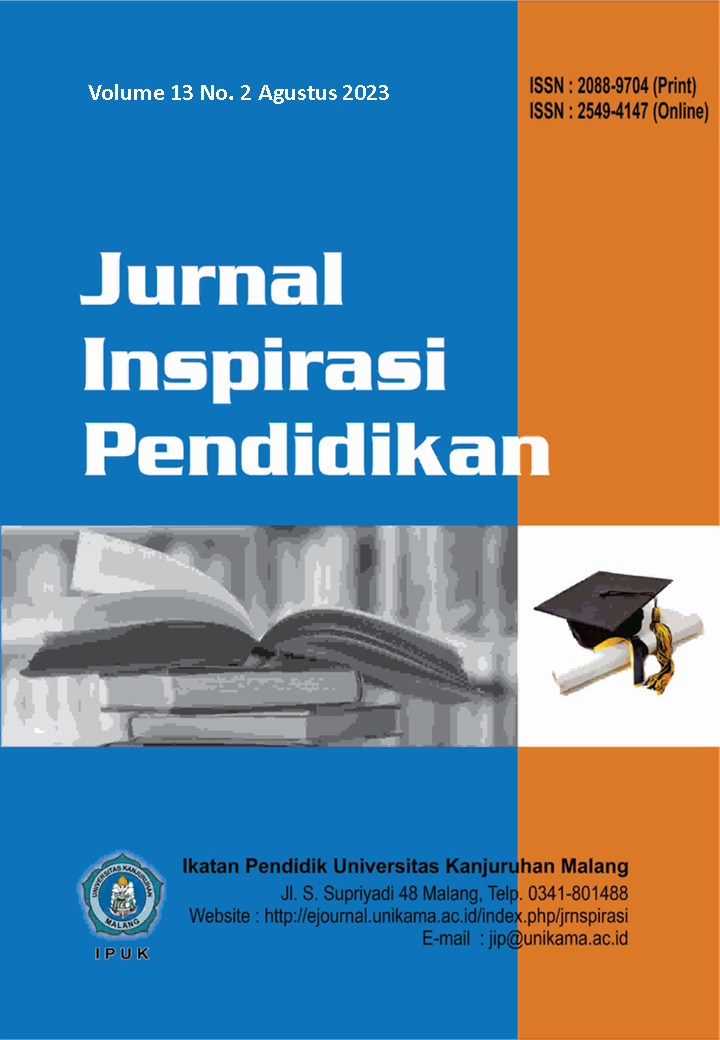Canva's efficacy in improving student writing skills
Main Article Content
Abstract
More and more studies on language education are currently considering the use of technology in writing training. Furthermore, the importance of using visual media in EFL lessons has been highlighted by the current study, which aims to help students improve their writing skills. The current study aims to investigate the impact of Canva on students' writing skills. This was accomplished by randomly assigning forty-four Indonesian EFL students—known as the experimental and control groups—to two writing classes. Prior to starting treatment, both groups completed a pre-test. Throughout the sessions, the Communicative Language Teaching (CLT) approach was used to instruct both classes. To help them explore their writing ideas, students in the experimental group were instructed to utilize Canva as a writing medium. After the treatment, a post-test was administered to both groups. The results of the pre-test and post-test were then processed using SPSS with the t test. The results of this test showed that the experimental group that was given treatment got better scores than the control group. After that, interviews were carried out to obtain qualitative data. As a result, each student had positive and negative perceptions.
Article Details

This work is licensed under a Creative Commons Attribution-ShareAlike 4.0 International License.
The journal allows the author(s) to hold the copyright without restrictions.
References
Alsubaie, J., & Ashuraidah, A. (2017). Exploring Writing Individually and Collaboratively Using Google Docs in EFL Contexts. English Language Teaching, 10(10), 10. https://doi.org/10.5539/elt.v10n10p10
Andriyanti, F., Pratiwi, D., Yunda, D., Bahasa dan Seni Budaya, F., Negeri Yogyakarta Jl Colombo Yogyakarta No, U., Malang, K., Depok, K., & Sleman, K. (2023). Improving Students Writing Skills Through Canva Application At Smp Muhammadiyah Imogiri Yogyakarta. International Journal of Contemporary Studies in Education, 02, 119–126. https://doi.org/10.30880/ijcse.v2i2.416
Dawadi, S., Shrestha, S., & Giri, R. A. (2021). Mixed-Methods Research: A Discussion on its Types, Challenges, and Criticisms. Journal of Practical Studies in Education, 2(2), 25–36. https://doi.org/10.46809/jpse.v2i2.20
Dolores, M., & Tongco, C. (2007). Definition of Purposive Sampling. A Journal of Plants, People and Applied Research, 5, 1–12.
Hernandez, R. M. (2017). Impacto de las TIC en la educación: Retos y Perspectivas. Propósitos y Representaciones, 5(1), 325. https://doi.org/10.20511/pyr2017.v5n1.149
Makalela, L. (2004). Differential Error Types in Second-Language Studentsâ€TM Written and Spoken Texts: Implications for Instruction in Writing. Written Communication, 21(4), 368–385. https://doi.org/10.1177/0741088304270026
Masturoh, S., Kusumo, A. B. P., & ... (2023). The Use Of Canva To Improve Students’ Writing Skills On Procedure Text. Innovative: Journal Of …, 3(3), 4681–4690. http://j-innovative.org/index.php/Innovative/article/view/2643%0Ahttp://j-innovative.org/index.php/Innovative/article/download/2643/1884
Mohd, N., & Bee, Y. (2011). Power comparisons of Shapiro-Wilk, Kolmogorov-Smirnov, Lilliefors and Anderson-Darling tests. Journal of Statistical Modeling and Analytics, 2(I), 21–33. https://www.nrc.gov/docs/ML1714/ML17143A100.pdf
Putri, D. Z., & Syafryadin, S. (2023). Students’ Perception of Using Canva Aplication in Writing Short Functional Text. JALL (Journal of Applied Linguistics and Literacy), 7(2), 185. https://doi.org/10.25157/jall.v7i2.9894
Tanjung, R. E., & Faiza, D. (2019). Canva sebagai media pembelajaran pada mata pelajaran dasar listrik dan elektronika. Voteteknika (Vocational Teknik Elektronika Dan Informatika), 7(2), 79-85.
Wahyuni, E., & Thohiriyah. (2018). Infographic: avoiding monotony in presenting teaching materials. Proceedings of 2nd English Language and Literature International Conference (ELLiC)280, 2(1), 280–283.
Wiyaka, ., Mujiyanto, J., & Rukmini, D. (2018). Students’ Perception on the Usefulness of ICT-Based Language Program. English Language Teaching, 11(2), 53. https://doi.org/10.5539/elt.v11n2p53
Ying, Z. (2018). Exploring Construction of College English Writing Course from the Perspective of Output-Driven Hypothesis. English Language Teaching, 11(2), 188. https://doi.org/10.5539/elt.v11n2p188
Yundayani, A. (2018). Present Situation Analysis: Students’ Early Characteristics in Writing for Academic Purposes. English Review: Journal of English Education, 6(2), 119. https://doi.org/10.25134/erjee.v6i2.1262
Zamel, V. (1982). Writing: The Process of Discovering Meaning. TESOL Quarterly, 16(2), 195. https://doi.org/10.2307/3586792
Zhang, Y. (2018). Exploring EFL Learners’ Self-Efficacy in Academic Writing Based on Process-Genre Approach. English Language Teaching, 11(6), 115. https://doi.org/10.5539/elt.v11n6p115

